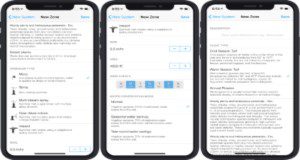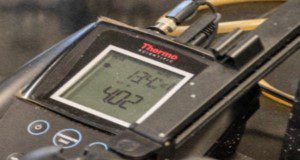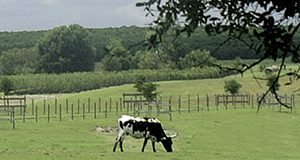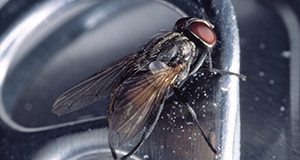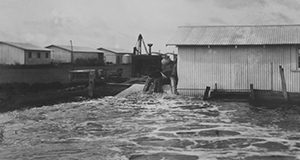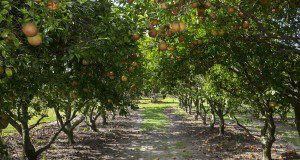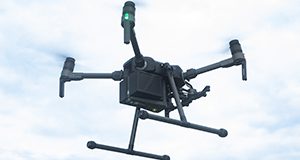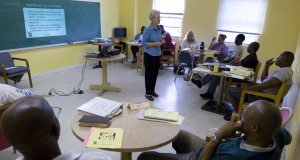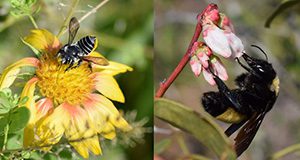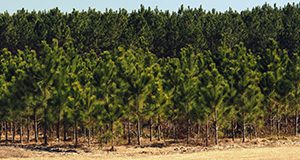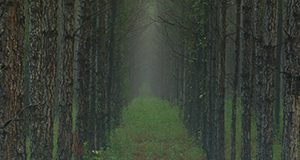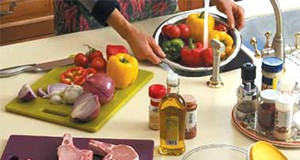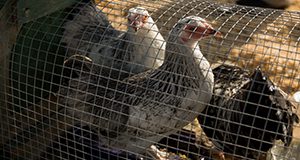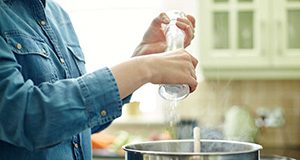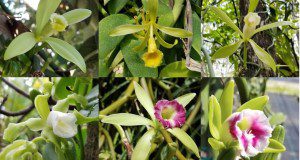As freshwater resources become increasingly scarce, efficient irrigation scheduling methods that allow efficient irrigation water uses are required. Migliaccio et al. (2016) have developed an app called Smartirrigation Turf, an easy-to-use mobile tool that delivers information to improve irrigation scheduling for urban turf. The app was only available for Florida and Georgia, but recently, we have made improvements to the app and made it available to any location throughout the contiguous United States. The 7-page major revision, written by Haimanote K. Bayabil, K. W. Migliaccio, J. H. Debastiani Andreis, C. Fraisse, K. T. Morgan, and G. Vellidis, and published by the UF/IFAS Department of Agricultural and Biological Engineering, describes the changes made on the recently released Smartirrigation Turf app.
https://edis.ifas.ufl.edu/ae499
Citrus Soil pH Testing Procedures
Maintaining the correct soil pH is essential to ensure optimal plant growth and crop yield. This new two-page document is an instructional sheet for citrus soil pH testing, written by Kelly Morgan and published by the UF/IFAS Department of Soil and Water Sciences.
https://edis.ifas.ufl.edu/ss665
Food System Study of Martin County, Florida
Martin County, Florida has a rich agricultural history with farming and cattle ranching being important economic drivers since the early 1930s. Nevertheless, the county struggles to meet the balance between food supply and demand. Farmers often face challenges finding sizable, secure, well-paying markets, and the most consumers do not participate in local food transactions. This 4-page fact sheet written by William A. Messina, Jr., Lisa House, Yvette Goodiel, and Carol Albertsand published by the UF/IFAS summarizes two studies conducted to examine agricultural production in Martin County and its food processing, distribution and marketing systems and infrastructure to better identify potential constraints and opportunities for the local food system.
http://edis.ifas.ufl.edu/fe1071
Homeowner’s Guide to Selecting a Pest Control Service
While you can prevent pests from infesting your home, you might need the services of a professional to evict them if they have already moved in. The pest control industry in Florida is the largest in the nation. How do you choose the best pest control company for you? This 6-page fact sheet written by Faith Oi, James E. Davis, John M. Diaz, Sarah M. Ellis, Randall A. Cantrell, Nelly Nelson, and Judy Corbus and published by the UF/IFAS Entomology and Nematology Department is full of practical tips and advice to help you choose a reliable and effective pest control service to help you kick out any uninvited crawlies.
http://edis.ifas.ufl.edu/in1269
Harvest Techniques for Hops (Humulus lupulus)
Hops (Humulus lupulus) are perennial plants commonly harvested for their mature strobiles, also referred to as cones, which are primarily dried and used as a bittering agent and preservative in beer production. The two primary factors of harvest timing and harvest method can have large impacts on the quality and economics of the finished product. The decision of when and how to harvest is important and should rely upon growing-region-specific environmental conditions, physical observations of the cones, and the wants and needs of the individual producer. This new 4-page publication of the UF/IFAS Environmental Horticulture Department describes the primary methods used in hop harvesting, including field, indoor, and machine harvesting. Written by Sean Michael Campbell and Brian J. Pearson.
https://edis.ifas.ufl.edu/ep578
Hurricane Preparedness for Forage Crops in the Southeast United States
This 4-page document provides information on preparing forage crops, conserved forage, and grazing areas for potential hurricane damage and alleviating hurricane damage on forage crops and grazing lands in the Southeast United States, with an emphasis on the Florida peninsula and Gulf Coast. Written by José C. B. Dubeux, Jr. and Edward K. Twidwell, and published by the UF/IFAS Agronomy Department, November 2019.
http://edis.ifas.ufl.edu/ag439
Citrus Soil pH Management
Management of both soil pH and nutrients is required to maintain soil fertility levels and ensure economic agricultural production. Maintaining soil in the 6.0-6.5 pH range is best for most crops including citrus. This new two-page publication of the UF/IFAS Department of Soil and Water Sciences, written by Kelly Morgan, explains the effects of soil pH on citrus as well as options for management.
https://edis.ifas.ufl.edu/ss666
Preflight and Flight Instructions on the Use of Unmanned Aerial Vehicles (UAVs) for Agricultural Applications
This 5-page document provides guidance on the appropriate use of unmanned aerial vehicles (UAVs) for agricultural applications in Florida. It contains step-by-step instructions for preparing a UAV for flight, creating a mission path (using flight mission planning apps), and collecting UAV-based data. Written by Sri Charan Kakarla, Leon De Morais Nunes, and Yiannis Ampatzidis, and published by the UF/IFAS Department of Agricultural and Biological Engineering, November 2019.
http://edis.ifas.ufl.edu/ae535
Conducting the Needs Assessment #2: Using Needs Assessments in Extension Programming
This second publication in the Conducting the Needs Assessment series provides Extension educators and other service providers with a foundational underpinning of how the needs assessment fits within the program planning process. Both formal and nonformal educators seeking to develop and deliver an educational program must first be informed of what their audience lacks in order to develop the right curriculum or training, and therefore conducting a needs assessment is a priority in the program development process. This new publication of the UF/IFAS Department of Agricultural Education and Communication was written by Matthew Benge and Laura Warner.
https://edis.ifas.ufl.edu/wc347
Attracting Native Bees to Your Florida Landscape
Florida is home to approximately 315 species of native wild bees. These bees rely on flowers for survival; their diets consist exclusively of pollen and nectar harvested from flowers. Recently reported declines in some bee species have heightened awareness of bee conservation across the United States and motivated efforts to increase floral resources for bees. This 7-page fact sheet written by Rachel E. Mallinger, Wayne Hobbs, Anne Yasalonis, and Gary Knox and published by the UF/IFAS Entomology and Nematology Department shows how gardeners and land managers can aid in conservation efforts by planting flowers for bees in home or community gardens.
http://edis.ifas.ufl.edu/IN1255
What Is the Value of an Existing Forest Stand?
Traditionally, the land expectation value (LEV) formula, the present value of perpetual cash inflows of timber revenues minus the present value of cash outflows of costs, has been employed as the main indicator of the value of a forest investment. However, when a forest stand is already established, the LEV approach is incomplete because it applies only to bare land. Thus, it is necessary to determine the value of a property with an existing forest stand. This 3-page fact sheet written by Andres Susaeta and Chris Demers and published by the UF/IFAS School of Forest Resources and Conservation provides the formula to determine the value of an already established forest stand at any stage of its development. This approach, known as the forest value formula, includes the value of the timber and the land. It can be used to compare the value of the stand when it is immediately harvested or when it is economically immature.
http://edis.ifas.ufl.edu/fr423
The Optimal Forest Management of an Even-Aged Stand: The Biological Rotation versus the Land Expectation Value
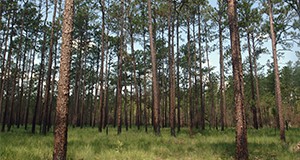
This 4-page fact sheet written by Andres Susaeta and Chris Demers and published by the UF/IFAS School of Forest Resources and Conservation provides a guide for forest landowners, managers, and stakeholders in conducting a valuation of timber investments. It reviews and provides examples of two different approaches for determining the optimal rotation age of even-aged forest stands. These methods can help forest landowners and managers in making forestry investment decisions.
http://edis.ifas.ufl.edu/fr424
Determining the Net Present Value of Timber Investments and Comparing Investments of Different Rotations
Would a forest landowner be economically better off growing a forest for pulpwood production with a short rotation instead of growing the same forest for sawtimber production with a longer rotation? To help answer this and related questions, this 4-page fact sheet written by Andres Susaeta and Chris Demers and published by the UF/IFAS School of Forest Resources and Conservation presents two approaches to determine the profitability of a forest stand. The net present value (NPV) of a single rotation provides the criterion to choose between different forest project investments of equal lives, whereas the equivalent annuity approach (EAA) is employed when forest project investments have different time lengths.
http://edis.ifas.ufl.edu/fr421
Bebidas nutricionales suplementarias: Las necesito?
Las bebidas nutricionales suplementarias a menudo se usan en hospitales y hogares de adultos para ayudar a nutrir a quienes pueden comer mal y han perdido peso debido a una enfermedad o falta de apetito. Más recientemente, las bebidas nutricionales están disponibles para la compra de los consumidores. Ejemplos de bebidas o batidos nutricionales suplementarios comunes son Ensure® y Boost®. Esta publicación explora la pregunta que muchos adultos mayores se hacen: “¿Necesito bebidas nutricionales suplementarias?”
This new 3-page publication of the UF/IFAS Food Science and Human Nutrition Department is a Spanish translation of FSHN18-12/FS315, Supplemental Nutrition Drinks: Do I Need Them? Written by Claire Marie Fassett, Nancy J. Gal, and Wendy J. Dahl, and translated by Daniela Rivero Mendoza.
https://edis.ifas.ufl.edu/fs321
¿Cuantas comidas debo comer cada dia?
Comer de manera saludable no se trata tanto de la cantidad de comidas y meriendas consumidas, sino de los tipos y las cantidades de alimentos totales consumidos en un día. Tratar de cumplir con las porciones recomendadas de los cinco grupos de alimentos, es decir, frutas, verduras, granos, proteínas y productos lácteos ayudará a promover la buena salud y prevenir enfermedades.
This new 2-page publication of the UF/IFAS Food Science and Human Nutrition Department is the Spanish translation of FSHN18-10/FS313, How many meals should I eat each day? Written by Zainab Alyousif and Wendy Dahl, and translated by Daniela Rivero Mendoza.
https://edis.ifas.ufl.edu/fs319
Economic Contributions of Agriculture, Natural Resources, and Food Industries in Florida in 2016
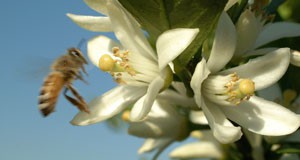
Collectively, the agriculture, natural resources, and food industries are significant contributors to the economy of the state of Florida. This 5-page fact sheet written by Christa D. Court, Alan W. Hodges, and Mohammad Rahmani and published by the UF/IFAS Food and Resource Economics Department outlines the economic contributions of these industries in calendar year 2016 to update previous reports from the Economic Impact Analysis Program and to provide current information for the purpose of informed public policy.
http://edis.ifas.ufl.edu/fe1055
Raising Backyard Chickens for Eggs
Raising backyard chickens is an increasingly popular way to explore self-sufficiency, connect with how our food is produced, and gain experience for future dabbling in food production. This 13-page publication is designed primarily for those considering raising backyard chickens for eggs for personal consumption. Written by Mary E. Henry, Jessica M. Ryals, Alicia Halbritter, and Derek L. Barber, and published by the UF/IFAS Department of Animal Sciences, revised November 2019.
http://edis.ifas.ufl.edu/an239
Sal: ¿Debo recortar su consumo?
La sal alimentaria está compuesta de sodio y cloruro, dos minerales esenciales necesarios para una buena salud. El sodio es muy importante para nuestro cuerpo para mantener el equilibrio de líquidos, el volumen de sangre y la presión arterial. Sin embargo, muchas personas consumen más sodio en la dieta (de la sal) que lo que se necesita. La disminución de sodio en la dieta ha recibido mucha atención en los últimos años debido a la asociación del alto consumo de sodio en la dieta con hipertensión (presión arterial alta) y enfermedad cardiovascular. Esta publicación explora los efectos en la salud de la ingesta excesiva de sodio y las formas de disminuir la ingesta de este mineral.
This new 3-page publication of the UF/IFAS Food Science and Human Nutrition Department is the Spanish version of FSHN 18-9/FS312: Salt: Should I Cut Back? Written by Asmaa Fatani, Nancy J. Gal, and Wendy J. Dahl, and translated by Daniela Rivero Mendoza.
https://edis.ifas.ufl.edu/fs320
Culture de la vanille dans le sud de la Floride
L’extrait de vanille est populaire dans le monde entier comme ingrédient dans la crème glacée et divers autres desserts. La source botanique de l’extrait de vanille provient principalement des gousses durcies (préparées) de l’espèce Vanilla planifolia. Les États-Unis sont les plus grands importateurs mondiaux de gousses de vanille, mais la production nationale est très faible. Toutefois, le sud de la Floride a un potentiel de production favorable á la culture de la vanille. Ce document contient des informations utiles aux producteurs intéressés par l’établissement d’une vanillerie.
This is the French version of HS1348, Vanilla Cultivation in Southern Florida. This new 9-page publication was written by Alan Chambers, Pamela Moon, Vovener de Verlands Edmond, and Elias Bassil, translated by Francesca Carla Erié, and published by the UF/IFAS Horticultural Sciences Department.
https://edis.ifas.ufl.edu/hs1351
Cultivo de vainilla en el sur de Florida
El extracto de vainilla es popular en el mundo entero como un ingrediente usado en helados y otros postres. La fuente botánica del extracto de vainilla es principalmente los frijoles curados de Vanilla planifolia. El Estados Unidos es el mayor importador mundial de vainilla judías, pero la producción nacional es mínima. El sur de la Florida tiene un clima de crecimiento favorable para el cultivo de vainilla. Este documento incluye información relevante para los productores interesados en establecer un cultivo de vainilla.
This is the Spanish version of HS1348, Vanilla Cultivation in Southern Florida. This new 8-page publication was written by Alan Chambers, Pamela Moon, Vovener de Verlands Edmond, and Elias Bassil, translated by Dayana Valdes, and published by the UF/IFAS Horticultural Sciences Department.
https://edis.ifas.ufl.edu/hs1350
